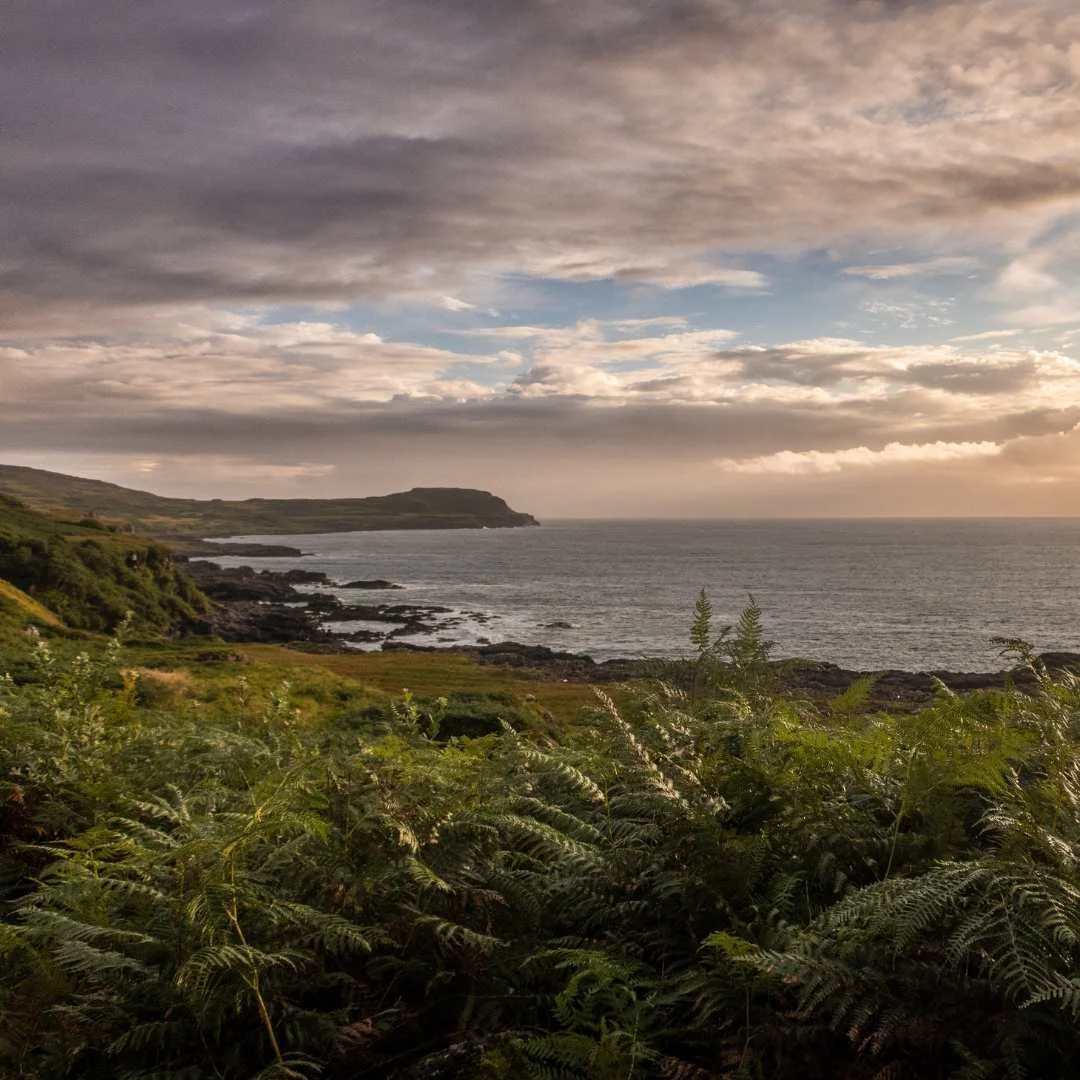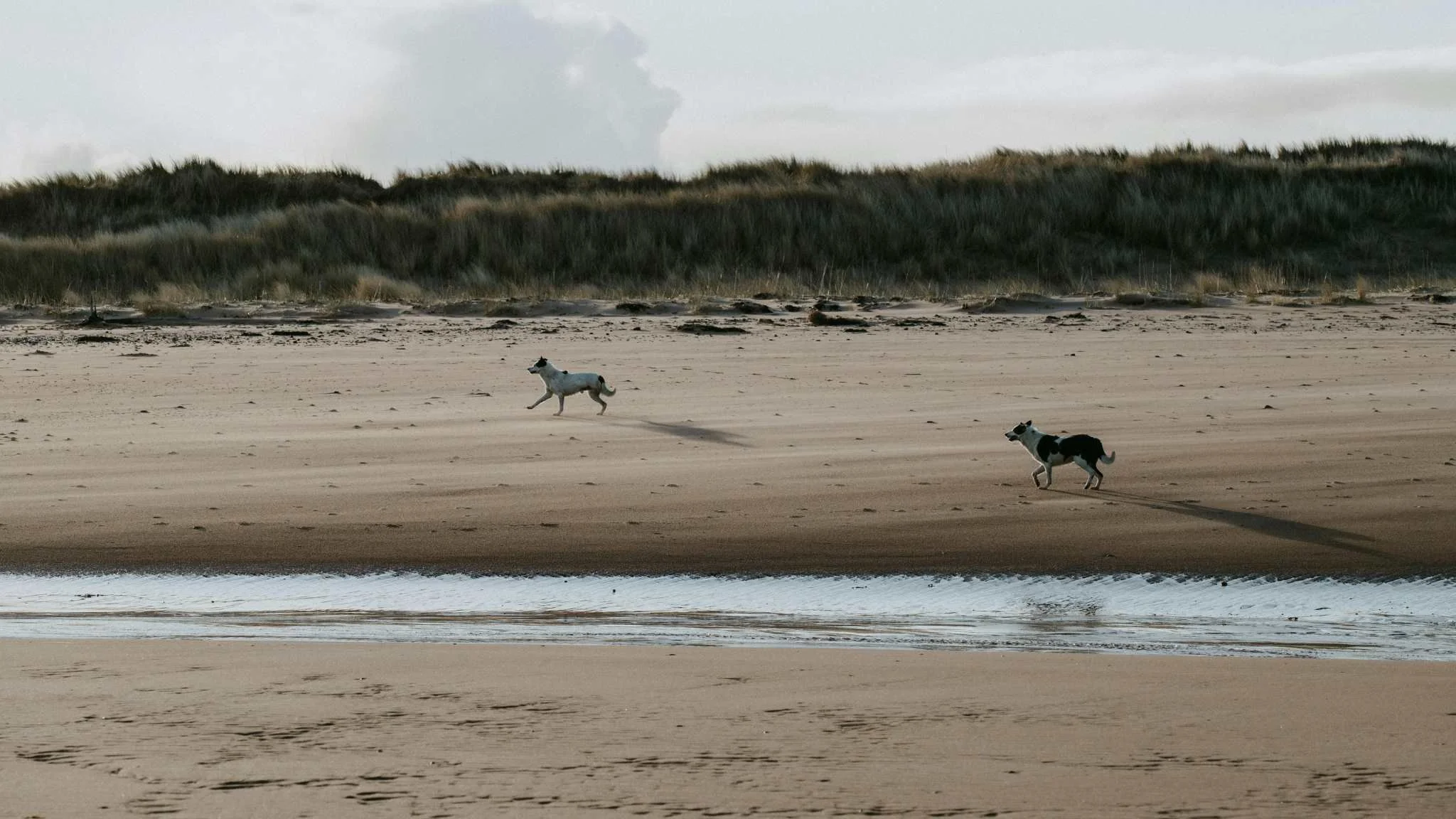10 Unbelievable Beaches You’ll Swear Are the Caribbean
Scotland or the Caribbean?
Stand on a Hebridean dune and it’s hard to tell. Powder-white shell sand, water the colour of blown glass, islands floating on the horizon—only the temperature gives the game away. If you’ve ever wondered whether Scotland really has white-sand beaches and turquoise water, the answer is a resounding, yes!
This guide rounds up ten show-stopping shores—from Harris to Ardnamurchan and Mull.
For each beach, you’ll get what matters in the real world: when the colours pop (think tide and wind), how to reach them, and simple tips to bring home “is-that-really-Scotland?” photos.
Luskentyre — Isle of Harris, Outer Hebrides
Vast, luminous, and unbelievably turquoise, Luskentyre is the Hebrides’ poster child for “wait… this is Scotland?”
People love the endless shell-sand bay and shifting ribbons of colour that appear a couple of hours either side of low tide, with views across to uninhabited Taransay—famous as the setting for the BBC series Castaway 2000, which launched Ben Fogle’s TV career.
You’ll find Luskentyre on Harris’s west coast, a short, signed detour from the main road; facilities are minimal, so arrive prepared and give yourself time to wander the machair. It’s not hype either—Luskentyre regularly features in best-beach lists thanks to those glassy shallows and mile-long walks.
Seilebost — Isle of Harris
Seilebost delivers the classic “Caribbean-from-Scotland” panorama.
From the elevated lay-by above the tiny former school and cemetery, you look down on layered jade channels and bleached sandbars with the Harris hills stacked behind—catnip for photographers.
It sits just across the bay from Luskentyre on Harris’s west coast, and because parking is limited to a couple of small lay-bys, it often feels quieter than its famous neighbour.
Tip: late-day light in late spring and summer makes the colours sing, and there’s a small campsite right on the beach if you fancy spending the night there!
Berneray West Beach — North Uist, Outer Hebrides
Three miles of arrow-straight white sand and an infinite Atlantic horizon make Berneray’s West Beach feel like the Bahamas on a good day.
It’s beloved for the simplicity of the scene—minimalist compositions, huge skies—and for the fact that even in summer you can walk for ages with only oystercatchers for company.
You’ll find it at the north end of North Uist, minutes from the Berneray–Leverburgh ferry.
Fun fact: in 2009, Thailand’s tourist board accidentally used a photo of this very beach to promote a Thai resort—an easy mistake to make given those colours.
Vatersay Bay — Vatersay (linked to Barra)
Vatersay is a coin-toss you always win: twin bays back-to-back across a tombolo, so at least one side is usually calm and quiet.
People love the feel of the place— wild grass, dunes, turquoise waters—and the sense of discovery at the island’s far edge.
It lies just south of Barra, reached by causeway, and has a sad story associated with it: the Annie Jane emigrant ship wrecked here in 1853 with heavy loss of life; a stone memorial still looks over the sands.
Bring everything you need and take it away again—there are few services, plenty of serenity.
Hushinish — Isle of Harris
At the end of a spectacular single-track road, Hushinish is a secret place. The waters edge framed by pink Lewisian gneiss, seals on skerries, and an unreal horizon that goes on forever.
The drive itself is a talking point: the public road passes right through the grounds of Amhuinnsuidhe Castle, a Victorian baronial pile built in 1865.
From the beach, a short, rugged hike leads to Tràigh Mheilein, a hidden sweep of white sand opposite Scarp that many rate among Harris’s finest.
Expect few facilities, big views, and multiple correct spellings (Hushinish / Huisinis / Huisinish).
Sanna Bay — Ardnamurchan (mainland)
Sanna’s snow-white crescents and black volcanic outcrops look tropical until the breeze reminds you you’re at the mainland’s western tip.
What brings the people in is the drama: views to the Small Isles and a beachscape shaped by the Ardnamurchan ring complex, the eroded heart of Britain’s best-preserved ancient volcano.
On a calm evening around low to mid-tide, the water turns glassy aquamarine and the curves of surf and sand line up for the camera. It’s remote—single-track roads and a little patience are part of the trip—but the pay-off is well worth it!
Achmelvich — Assynt (NC500, mainland)
Pocket-sized and perfect, Achmelvich packs tropical tones into a small amphitheatre of ancient rock and hides an oddity in the dunes behind: Hermit’s Castle, a tiny 1950s concrete shelter often dubbed “Europe’s smallest castle.”
People love Achmelvich for its soft, shallow bay, the short headland trail with elevated views, and the way the water changes colour as the light improves.
It’s near Lochinver in Assynt, a short detour off the NC500; arrive early or late in peak season to dodge the crowds and snag parking.
Oldshoremore & Polin — Kinlochbervie (mainland)
These two neighbour bays glow grass green under the gneiss rock headlands and feel blissfully unhurried even in summer.
They sit just beyond Kinlochbervie in far-north-west Sutherland and form part of a protected mosaic of dunes and machair within the Sheigra–Oldshoremore Site of Special Scientific Interest and wider Special Area of Conservation around the John Muir Trust’s Sandwood estate.
Translation: tread lightly—this is some of Scotland’s most precious coastal habitat. A short walk from decent car parks lead to easy, happy hours out on the sand.
Camusdarach & the Silver Sands of Morar — Arisaig/Mallaig (mainland)
The movies made these beaches famous: Local Hero filmed its iconic seaside scenes at Camusdarach.
The sands run between Arisaig and Morar on the Road to the Isles, where the River Morar, often cited as one of Scotland’s shortest, spills into a shallow, sheltered bay of white sand and sky-coloured water.
Families love the easy access, west-facing sunsets, and island views of Rum and Eigg; photographers come for pastel coloured evening skies and tide-revealed patterns.
Calgary Bay — Isle of Mull
Calgary is Mull distilled: a wide crescent of pale sand and teal water under rolling hills, with a quirky Art in Nature sculpture trail threading the woods behind the beach.
It sits on Mull’s north-west coast and is one of the island’s most accessible, family-friendly bays—toilets and a cafe included.
Fun fact: Calgary, Alberta, takes its name from this spot, thanks to Colonel James Macleod of the North-West Mounted Police, who holidayed here in the 1870s and brought the name back to Canada.
FAQs
Does Scotland really have white-sand, turquoise-water beaches?
Yes. The Hebrides and west coast sit on pale shell-sand (machair) and shallow, clear water. In sun and light winds—especially around low to mid tide—the sea scatters blue-green light that reads tropical.
Are these beaches warm enough to swim?
The water stays cold all year. Summer is most comfortable, but many swimmers prefer a wetsuit, boots, and gloves for longer dips. Enter slowly and know your limits. That being said, many a brave soul in Scotland has taken up wild swimming as a hobby and frequently show that braving the waters at any time of year is not only possible, but enjoyable (Aye, right).
Do I need a car to reach them?
A car makes island hops and single-track roads simpler and lets you chase light and tide. Some beaches are reachable by bus or bike with careful planning. We also operate tours around Scotland where a lovely beach is often included, check out our tours to see if any take your fancy!
Which beaches work best in the wind?
Look for tombolos (nature’s sand bridge from the shore to an island, built by waves moving sand into the island’s “windbreak” zone) and twin bays like Vatersay, where one side is often sheltered. In stronger winds, headlands can be exhilarating for photos even if you skip the swim.
Family-friendly picks with facilities?
Calgary (Mull) and Camusdarach/Morar often have nearby loos and seasonal cafés or campsites. Always check ahead and carry a backup plan, as many of the best beaches in Scotland are quite remote, which just means you’re more likely to have the place to yourself!
What month is best for colour?
Late May to September brings long light and steadier weather. The crisper season days can be spectacular too—just remember to pack layers.
When pale shell sand, clear Atlantic light, and calm, shallow bays line up, Scotland turns Caribbean—only the temperature tells differently.
Which beach wins your crown for “most Caribbean”—and what conditions did you catch?
Share your pick, and if you’d like the logistics handled, join one of our small-group West Coast and island tours!











